Posts for: HarryBinNC
Oct 2, 2012 03:21:16 #
Bram boy wrote:
Shure it works but the whole point of having a 12m... (show quote)
Bram boy, what you are missing here is the fact that the 12-24 is an 18-36mm equivalent in 35 mm terms when used on the DX cameras it was "meant for". When I use it on a 35 mm (full-frame) camera, it is fully usable from the 16mm focal length to the long end of 24 mm. So as far as the wide end goes, I can actually get a WIDER angle image when I use the lens on the FX camera. And in my work, I use it mostly at the 18mm setting or lower when I can get away with it. It is a great lens, and I am glad that it has an image circle that is large enough to cover my D700's full-frame 35mm sensor. I am also very happy that I didn't have to part with it as I thought I might when I converted to the larger format. When the lens is used "on the camera it was designed for", it cannot provide anything wider than the 18mm angle of view due to the 1.5x crop factor of Nikon cameras with APS size sensors. So it is not really a "12mm" lens on either the crop sensor camera or the full-frame D700.
Personally, I wish the camera makers/marketers had never started up this convention of always defining lenses in 35mm film camera terms. This was never done in the days of film. Lenses were described by their actual focal lengths, ranges of f-stops and the kind of mounts available for them. Photographers generally knew what all that stuff meant in relation to different cameras and film formats. Now what we have is a lot of confusion resulting in comments like the one made by Bram boy.
In general, serious photographers over the years come across cameras, lenses, and accessories that they really really like and love coming up with new or different ways to use them - this often involves using lenses on cameras that they weren't originally designed for. As a result, we now have a plethora of adapters to put a wide variety of lenses on cameras they were not "made for".
The bottom line for me is that the 12-24 does a great job at the wide end of a set of fine Nikkor lenses covering from 16 to 500mm, and I am very glad I have it.
I have attached a few images that I made with it on a recent job.
Harry
3 shot bedroom pano
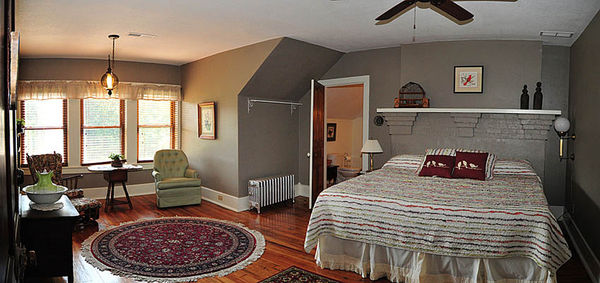
Parlor
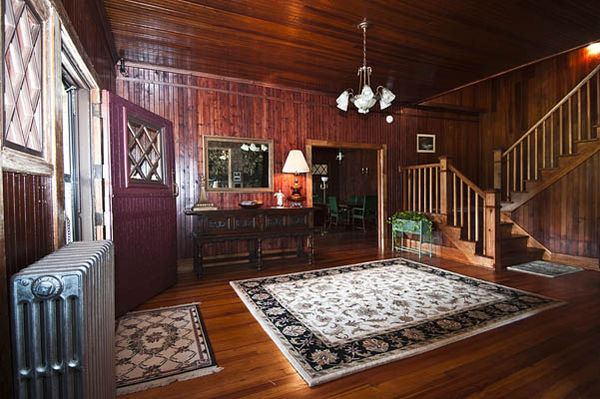
Upstairs
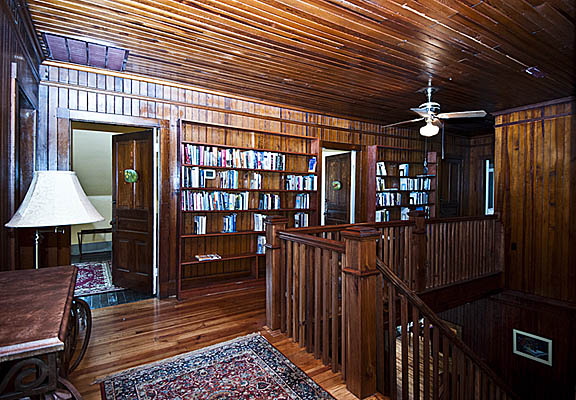
Oct 2, 2012 00:20:17 #
ygelman wrote:
quote=PrairieSeasons . . . . br You didn't ask h... (show quote)
You can do a pretty good job of it in Photoshops Lens Correction -
The key is that before you apply the keystoning correction, you have to get the center of the image straight. Look at the brick buildings in the background - the buildings are tilted to the left at the image's vertical center line. Once you have rotated the image clockwise to get those buildings straight up and down at the centerline, Use the Vertical Perspective control in the Transform section (under the Custom Tab) to straighten up the verticals in the building on the left (I am assuming that that building wasn't leaning). Now the tower will lean to the right approximately as it should be without looking like it is actually falling over! I might have been a little too conservative when rotating the image initially, so the tower might really be leaning to the right a little more!
Harry
Right Leaning Tower
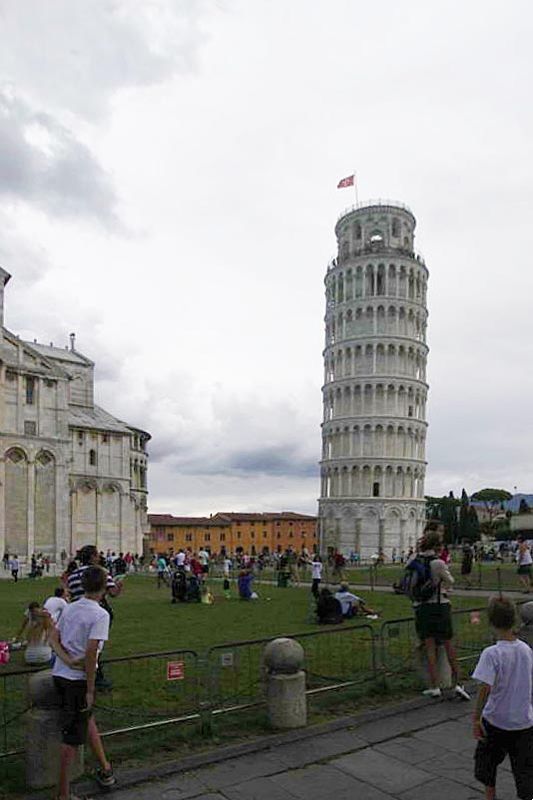
Oct 1, 2012 23:22:39 #
jsleszynski wrote:
Harry, I'm confused. Are you saying that the 12-24mm Dx lens works without the crop factor on the d700? The 12-24mm is 12-24mm, not 18-32mm on the d700 when you set the dx crop off in the image area? How much of the sensor is used, the full fx or the dx size?
Yes, I have turned off the camera's default DX lens crop function so that ANY DX LENS will have access to the full 12mpx FX sensor area. I suspect that a lot of DX lenses do not have a large enough image circle to make this worthwhile. The 12-24 does, however, since I can get a true 16mm field of view from it in FX mode - you will see in the attached image that vignetting is just starting to set in at the 16mm focal length. The severely vignetted image was taken with the lens set to 12mm. The bright area shows the 5mpx image that would be captured with the DX crop function activated. The image captured is the same as you would get at the 18mm FX setting, except that when you are using the full FX frame, you have a 12mpx image instead of only 5mpx. The bottom line is, there is no good reason to use the Nikkor 12-24 in DX mode on an FX Nikon.
Since I rarely need more width than 18mm for my work, the 12-24 lens is perfect for me.
Harry
12-24@16mm-FX (Full-Frame) mode
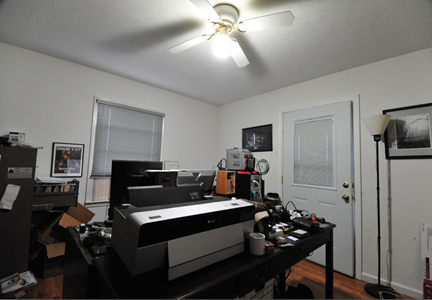
12-24@12mm-FXmode w/18mmFX crop area
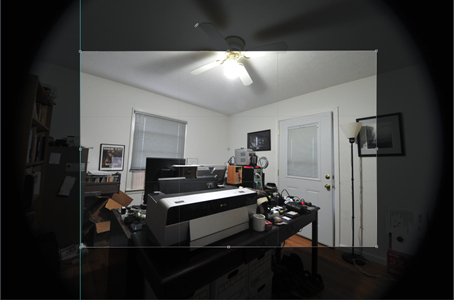
Oct 1, 2012 12:50:31 #
I was delighted to learn that I could use one of my favorite DX lenses (12-24/4.0) in full FX mode on my D700 after upgrading from the D200.
Not only that, but I can use it wide open all the way down to about 16mm before serious vignetting starts creeping in. The D700 default was to automatically crop any DX lens image, but fortunately, there is a "Image Area" setting in the Shooting Menu that allows you to turn off the DX lens cropping. I suspect that the other FX Nikons also have this setting.
That capability has allowed me to continue using a great lens for a lot of the building interiors I do, and saved me the expense of buying the 14-24.
Harry
Not only that, but I can use it wide open all the way down to about 16mm before serious vignetting starts creeping in. The D700 default was to automatically crop any DX lens image, but fortunately, there is a "Image Area" setting in the Shooting Menu that allows you to turn off the DX lens cropping. I suspect that the other FX Nikons also have this setting.
That capability has allowed me to continue using a great lens for a lot of the building interiors I do, and saved me the expense of buying the 14-24.
Harry